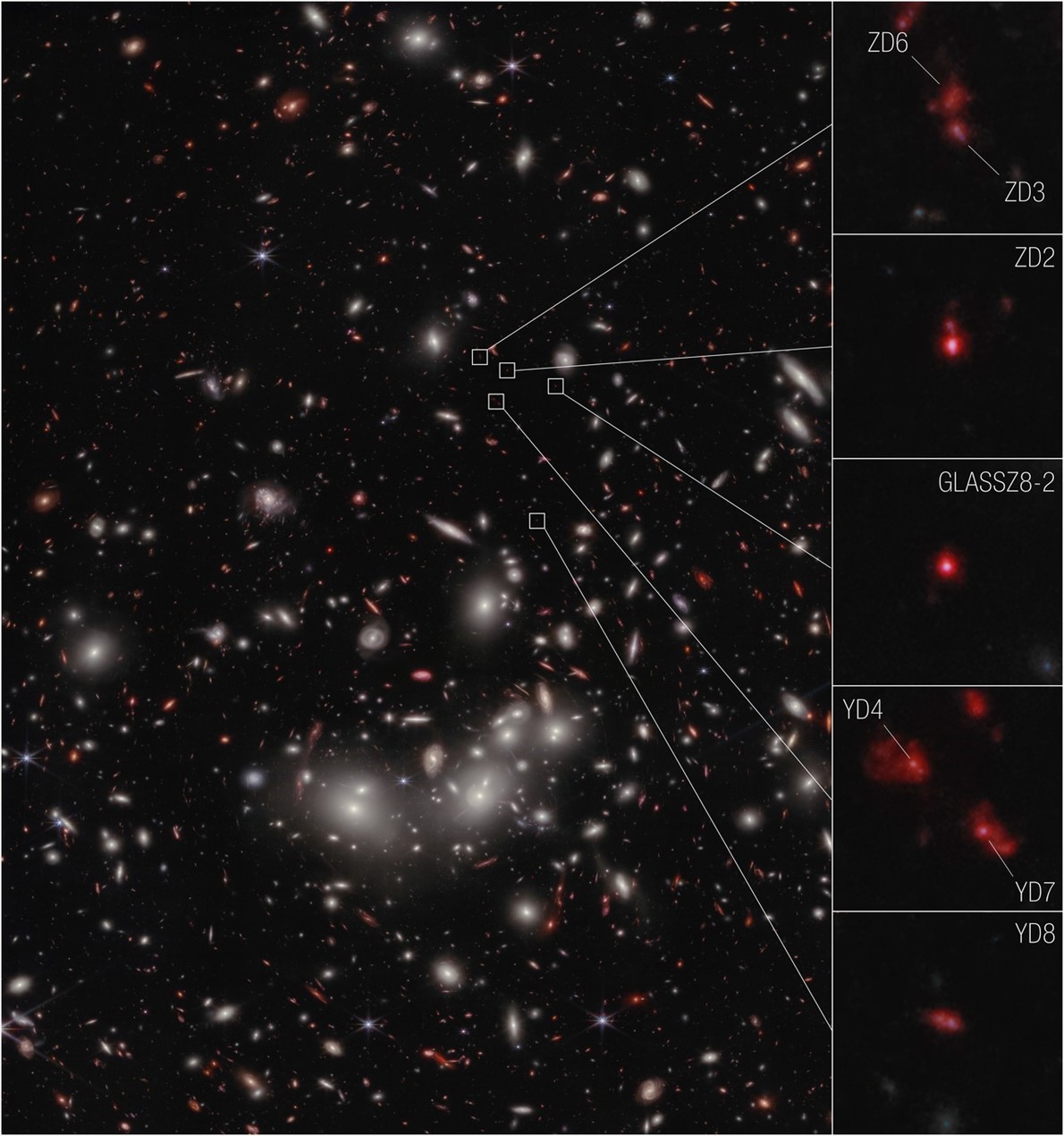Like basketball scouts discovering a nimble, super-tall
teenager, astronomers using the James Webb Space Telescope reported recently
that they had identified a small, captivating group of baby galaxies near the
dawn of time. These galaxies, the scientists say, could well grow into one of
the biggest conglomerations of mass in the universe, a vast cluster of
thousands of galaxies and trillions of stars.
اضافة اعلان
The seven galaxies they identified date to a moment 13
billion years ago, just 650 million years after the Big Bang.

“This could indeed have been the most massive system in the
entire universe at the time,” said Takahiro Morishita, an astronomer at the
California Institute of Technology’s Infrared Processing and Analysis Center.
He described the proto-cluster as the most distant and thus earliest such
entity yet observed. Morishita was the lead author of a report on the
discovery, which was published Monday in The Astrophysical Journal Letters.
The scientists’ report is an outgrowth of a larger effort
known as the Grism Lens-Amplified Survey from Space, organized by Tommaso Treu,
an astronomer at the University of California, Los Angeles, to harvest early
science results from the Webb telescope.
The telescope was launched into orbit around the sun on
Christmas Day in 2021. With its infrared detectors and a booming primary mirror
6.4m wide, it is ideal for investigating the early years of the universe. As
the universe expands, galaxies that are so distant in space and time are racing
away from Earth so quickly that most of their visible light, and the
information about them, has been stretched into invisible infrared wavelengths,
like receding sirens lowering in pitch.
In its first year, the Webb has already recovered a bounty
of bright galaxies and big black holes that formed only a few hundred million
years after the Big Bang.
The latest infant galaxies had been detected over the years
by the Hubble Space Telescope as red dots of light, visible at such great
remove only because they had been magnified by the space-warping gravity of
Pandora’s Cluster, an intervening cluster of galaxies in the constellation
Sculptor.
Spectroscopic measurements with the Webb telescope confirmed
that the seven dots were galaxies and were all equally far from Earth. They
occupy a region of space 400,000 light-years across, or about one-sixth the
distance from here to the Milky Way galaxy’s nearest cousin, the great spiral
galaxy Andromeda.
“So, our efforts of following up on the formerly known
potential proto-cluster finally paid off after almost 10 years!” Morishita
wrote.
According to calculations based on prevailing models of the
universe, gravity will eventually draw these galaxies together into a massive
cluster containing at least 1 trillion stars. “We can see these distant
galaxies like small drops of water in different rivers, and we can see that
eventually they will all become part of one big, mighty river,” said Benedetta
Vulcani of the National Institute of Astrophysics in Italy and a member of the
research group.
The spectroscopic data also allowed Morishita and his
colleagues to determine that the stars populating some of these embryonic
galaxies were surprisingly mature, containing sizable amounts of elements like
oxygen and iron, which would have had to have been forged in the nuclear
furnaces of generations of earlier stars. Others among the infant galaxies were
more pristine. In theory, the very first stars in the universe would have been
composed of pure hydrogen and helium, the first elements to emerge from the Big
Bang.
Some of these galaxies were birthing stars at a prodigious
rate, more than 10 times as fast as the Milky Way, which is 10 to 100 times as
big. Others in the young group were barely generating one star a year, “which
is an interesting diversity in a group of galaxies at this early epoch,”
Morishita said.
All this adds to a suspicion among some cosmologists that
the early universe was producing stars, galaxies and black holes much faster
than the standard theory predicts. In an email, Morishita said there was not
yet any “crisis” in cosmology.
“The easier explanation,” he wrote, “is that our prior
understanding of star formation and dust production in the early universe,
which are complex phenomena, was incomplete.”
Read more Lifestyle
Jordan News







